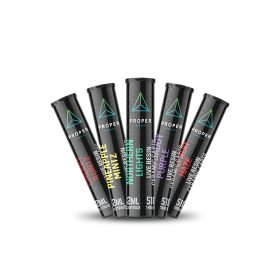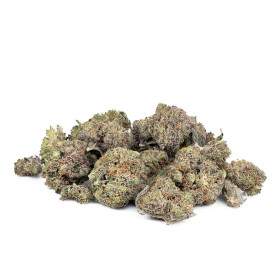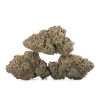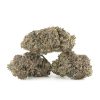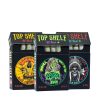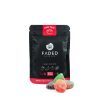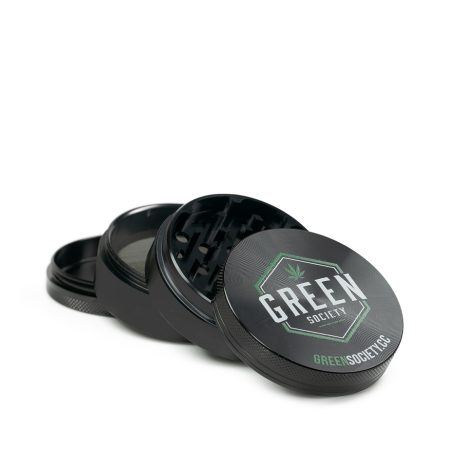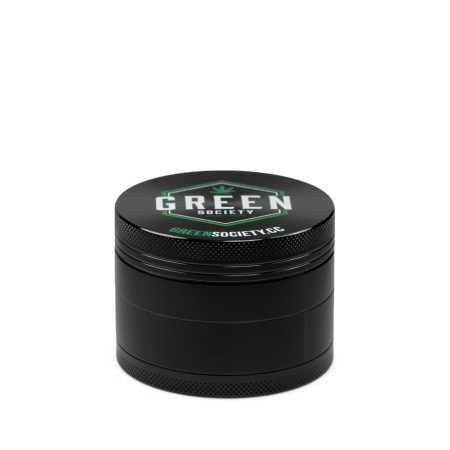Marijuana
How to Read Lab Results for Cannabis Products 2025
Cannabis shoppers are paying more attention to lab results than ever. And for good reason. Over 60 percent of online buyers list clear lab results as a top priority when picking a product. But most people still only look at THC numbers and ignore safety checks hidden in the fine print. These overlooked details could be the real difference between a smart buy and a risky mistake.
Table of Contents
- What Cannabis Lab Results Show
- Key Markers: Thc, Cbd, And Terpenes
- Interpreting Safety And Potency Data
- Tips For Choosing Quality Cannabis Online
Quick Summary
| Takeaway | Explanation |
|---|---|
| Understand Certificate of Analysis (COA) | A COA confirms the product’s safety, potency, and composition through lab results. Familiarity helps in making informed decisions. |
| Focus on Key Cannabinoid Levels | Pay attention to THC and CBD concentrations to align products with your desired effects and therapy needs. |
| Assess Comprehensive Contaminant Screening | Check for pesticides, heavy metals, and microbial contaminants to ensure product safety and avoid health risks. |
| Verify Lab Credentials and Testing Standards | Confirm the laboratory’s accreditation and ensure testing meets regulatory standards for reliable results. |
| Practice Caution When Purchasing Online | Approach online cannabis shopping strategically by reviewing lab results, reading reviews, and starting with smaller quantities. |
What Cannabis Lab Results Show
Cannabis lab results provide critical insights into product safety, quality, and potency for consumers and medical users. These comprehensive test reports offer a detailed breakdown of a cannabis product’s chemical composition and potential contaminants, enabling informed purchasing decisions.
Understanding the Certificate of Analysis (COA)
A Certificate of Analysis represents the official laboratory report that validates a cannabis product’s characteristics. Learn more about product safety standards to comprehend these intricate documents fully. According to the Washington State Liquor and Cannabis Board, a standard COA typically includes several critical screening components:
- Potency Analysis: Measures precise cannabinoid concentrations like THC and CBD
- Microbiological Screening: Checks for harmful bacterial or fungal contamination
- Pesticide Screening: Identifies potential chemical residues from cultivation processes
- Residual Solvent Testing: Ensures extraction methods did not leave harmful chemical traces
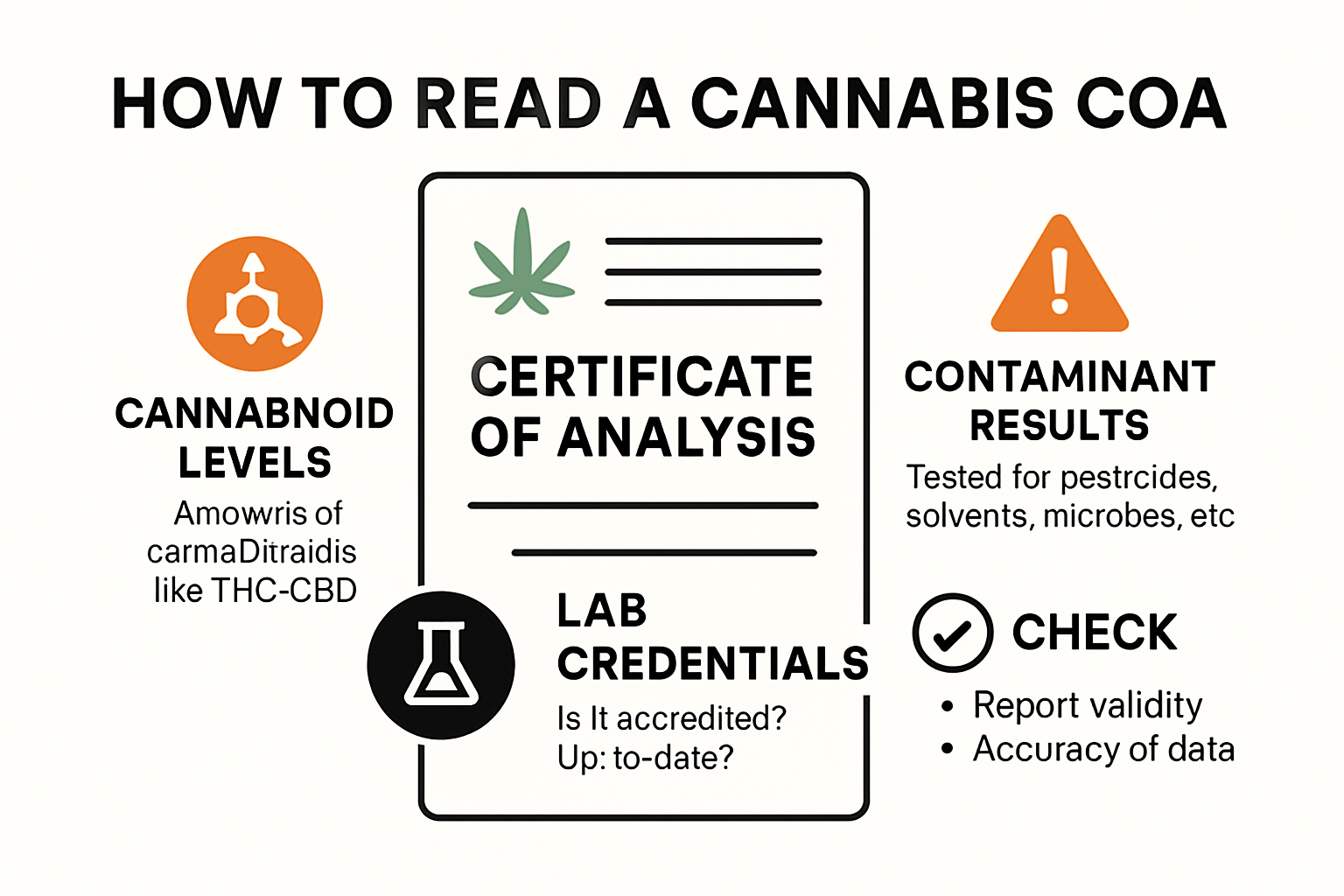
Here’s a table summarizing the key elements commonly found in a Cannabis Certificate of Analysis (COA), helping you easily compare the different types of laboratory screening:
| Screening Type | Purpose | Example Concerns Addressed |
|---|---|---|
| Potency Analysis | Measures cannabinoid content (e.g., THC, CBD) | Accurate dosing, recreational/medical use |
| Microbiological Screening | Detects harmful bacteria & fungi | E. coli, Salmonella, mould |
| Pesticide Screening | Identifies chemical residues from cultivation | Pesticide exposure, chemical safety |
| Residual Solvent Testing | Checks for chemical traces from extraction | Butane, ethanol, other solvents |
Key Components of Lab Test Results
Lab results go beyond simple percentage measurements. They provide a comprehensive snapshot of product quality and safety. Consumers should pay attention to specific details that indicate product integrity:
Cannabinoid Profile: This section reveals the exact concentration of different cannabinoids. Understanding this helps users select products matching their desired effects or medical requirements. THC and CBD percentages are particularly crucial for determining potential therapeutic or recreational impacts.
Terpene Analysis: Terpenes contribute to a cannabis product’s unique aroma and potential effects. Lab results often include a detailed breakdown of terpene composition, which can help consumers understand the potential sensory and physiological characteristics of their selected product.
Contaminant Screening: Rigorous testing identifies potential health risks. According to the New Jersey Cannabis Regulatory Commission, comprehensive screenings check for mycotoxins, heavy metals, and other potentially harmful substances that could compromise product safety.
Reading and interpreting cannabis lab results might seem complex, but understanding these key elements empowers consumers to make informed choices. By carefully examining a Certificate of Analysis, you can ensure the cannabis products you purchase meet high standards of quality, potency, and safety.
Key Markers: THC, CBD, and Terpenes
Understanding the key chemical markers in cannabis products is crucial for consumers seeking specific effects, therapeutic benefits, or recreational experiences. These markers primarily include cannabinoids like THC and CBD, along with terpenes that contribute to the plant’s unique characteristics.
Understanding Cannabinoid Concentrations
Research published in the Journal of Analytical Toxicology highlights the critical importance of precise cannabinoid testing. THC (tetrahydrocannabinol) and CBD (cannabidiol) are the most prominent cannabinoids, each offering distinct properties. THC is primarily responsible for psychoactive effects, while CBD is known for potential therapeutic benefits without intoxication.
THC Concentration: This marker indicates the potential psychoactive potency of a cannabis product. Higher THC percentages typically suggest more intense cognitive and physical effects. Consumers should carefully consider their tolerance and desired experience when selecting products with different THC levels.
CBD Concentration: Often sought for potential wellness benefits, CBD concentrations provide insights into a product’s potential therapeutic applications. Products with higher CBD and lower THC levels are frequently chosen by individuals seeking potential relief from anxiety, pain, or inflammation without significant psychoactive effects.
The Role of Terpenes in Cannabis Profiles
Terpenes are aromatic compounds that contribute significantly to a cannabis product’s sensory and potential physiological effects. According to analytical cannabis research, these compounds do more than create distinctive aromas they potentially interact with cannabinoids to produce what researchers call the “entourage effect”.
Common Terpene Profiles:
- Myrcene: Associated with relaxation and potential sedative effects
- Limonene: Often linked to mood elevation and stress reduction
- Pinene: May contribute to potential alertness and memory retention
The following table summarizes the key characteristics of the most common cannabinoids and terpenes mentioned, helping readers quickly compare their effects and roles:
| Compound | Type | Characteristic Effects | Notes |
|---|---|---|---|
| THC | Cannabinoid | Psychoactive; cognitive/physical high | Primary intoxicating cannabinoid |
| CBD | Cannabinoid | Non-intoxicating; possible wellness | Anti-anxiety, pain/inflammation relief |
| Myrcene | Terpene | Relaxation, sedative | Most abundant, couch-lock effect |
| Limonene | Terpene | Mood elevation, stress reduction | Citrus aroma, uplifting |
| Pinene | Terpene | Alertness, memory retention | Pine aroma, may counteract THC fog |
Interpreting Comprehensive Cannabinoid and Terpene Profiles
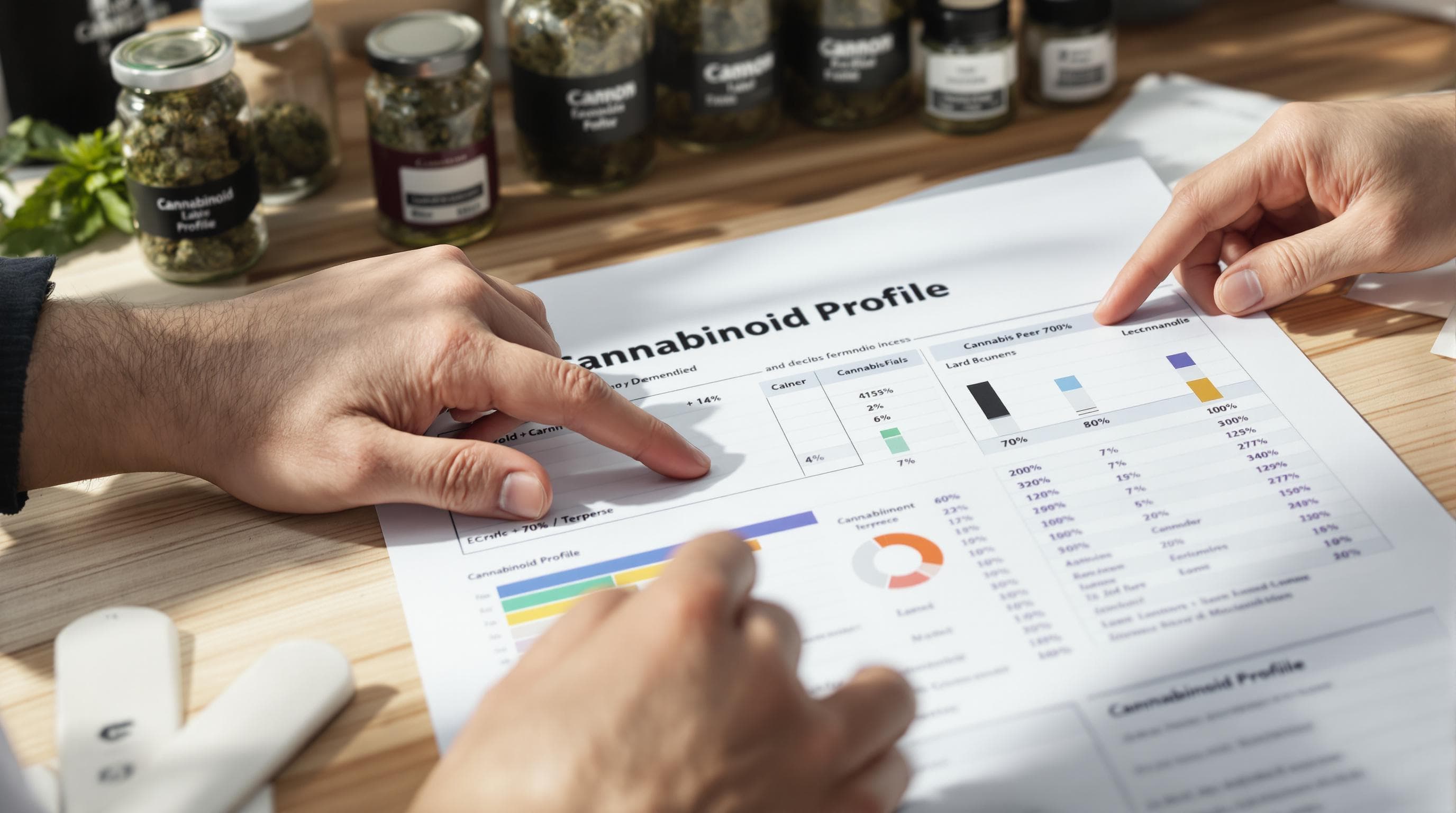
Reading cannabis lab results requires understanding the interplay between THC, CBD, and terpenes. A comprehensive profile provides more than isolated percentages it offers a holistic view of the product’s potential effects and characteristics.
Consumers should approach these markers as a guide rather than a definitive predictor. Individual experiences can vary based on personal physiology, consumption method, and other factors. Always start with lower doses and carefully observe your body’s response, especially when exploring new cannabis products.
By understanding these key markers, consumers can make more informed decisions, selecting products that align with their specific wellness goals, recreational preferences, and desired experiences.
Interpreting Safety and Potency Data
Interpreting safety and potency data requires a nuanced understanding of complex laboratory test results. Consumers must develop critical skills to evaluate cannabis product quality beyond surface-level measurements, ensuring they select safe and effective products.
Comprehensive Contaminant Screening
Safety begins with thorough contaminant screening. Research from the National Institute of Standards and Technology emphasizes the importance of rigorous testing protocols. Key contaminants that laboratories typically screen include:
- Pesticide Residues: Chemical compounds used during cultivation
- Heavy Metals: Potentially harmful mineral traces
- Microbial Organisms: Bacteria, fungi, and other microbes
- Residual Solvents: Chemical remnants from extraction processes
Understanding Potency Measurement Standards
Potency data provides critical insights into a product’s chemical composition and potential effects. According to clinical research, potency measurement involves precise quantification of cannabinoid concentrations. Professional laboratories use advanced analytical techniques to ensure accuracy.
Key Potency Considerations:
- Absolute Concentration: Exact percentage of cannabinoids
- Relative Ratios: Proportional relationships between different compounds
- Consistency: Uniformity across product batches
Quality Assurance and Interpretation Guidelines
The Washington State Liquor and Cannabis Board recommends several critical steps for interpreting safety and potency data:
- Verify the laboratory’s accreditation and reputation
- Check for comprehensive testing across multiple parameters
- Review detailed cannabinoid and terpene profiles
- Examine contaminant screening results thoroughly
- Compare results against regulatory safety standards
Reading lab results requires a systematic approach. Look beyond raw numbers and understand the broader context of product quality. Pay attention to testing dates, laboratory credentials, and comprehensive screening methods.
Consumers should treat lab results as essential information for making informed decisions. While these results provide valuable insights, individual experiences can vary. Always approach new products cautiously, start with lower doses, and monitor your body’s response.
By developing skills to critically interpret safety and potency data, consumers can confidently navigate the complex landscape of cannabis products, prioritizing their health and desired experience.
Tips for Choosing Quality Cannabis Online
Selecting high-quality cannabis products online requires a strategic approach that goes beyond simply browsing product images. Consumers must develop critical skills to evaluate product quality, safety, and authenticity in the digital marketplace.
Verifying Laboratory Certifications and Credentials
Research from the National Center for Biotechnology Information emphasizes the importance of third-party testing and product specifications. When choosing cannabis online, prioritize platforms that provide transparent and comprehensive laboratory documentation. Key verification steps include:
- Accreditation Check: Confirm the testing laboratory’s professional credentials
- Recent Testing Date: Ensure lab results are current and relevant
- Comprehensive Screening: Look for detailed reports covering multiple quality parameters
Understanding Certificate of Analysis (COA) Details
The New Jersey Cannabis Regulatory Commission highlights the critical nature of carefully reviewing Certificates of Analysis. Consumers should pay close attention to several crucial elements:
Cannabinoid Profile Verification:
- Cross-reference listed THC and CBD percentages
- Check for consistency across different product batches
- Understand the potential effects based on cannabinoid concentrations
Contaminant Screening:
- Review results for pesticides, heavy metals, and microbial organisms
- Confirm the product meets safety regulatory standards
- Identify any potential health risks
Best Practices for Online Cannabis Purchasing
Learn more about our ordering process to ensure a smooth and informed purchasing experience. When selecting cannabis products online, consider these strategic recommendations:
- Research the online dispensary’s reputation and customer reviews
- Compare lab results across multiple products
- Start with smaller quantities when trying new products
- Verify shipping and packaging discretion
- Check return and quality guarantee policies
Below is a checklist table to summarize best practices for buying cannabis online based on the steps and considerations outlined above:
| Best Practice | Action/Status |
|---|---|
| Research dispensary reputation & reviews | ✔ |
| Compare lab results between products | ✔ |
| Start with smaller quantities | ✔ |
| Verify laboratory accreditation | ✔ |
| Ensure recent and comprehensive lab testing | ✔ |
| Check shipping, packaging, and return policies | ✔ |
Online cannabis shopping requires an informed and cautious approach. Always prioritize platforms that provide comprehensive laboratory documentation, transparent testing results, and clear product information. Remember that while lab results offer valuable insights, individual experiences can vary.
By developing a systematic approach to online cannabis selection, consumers can make more confident and health-conscious purchasing decisions. Take time to understand the nuances of lab results, ask questions, and never hesitate to seek additional information before completing a purchase.
Frequently Asked Questions
What is a Certificate of Analysis (COA) for cannabis products?
A Certificate of Analysis (COA) is an official lab report that confirms the safety, potency, and composition of a cannabis product, detailing cannabinoid concentrations and contaminant screenings.
Why are THC and CBD levels important in cannabis lab results?
THC and CBD levels are crucial as they indicate the psychoactive and therapeutic effects of the product. Higher THC generally leads to stronger psychoactive effects, while CBD is sought for its potential wellness benefits without intoxication.
What should I look for in cannabis lab results regarding safety?
Consumers should assess contaminant screenings for pesticides, heavy metals, and microbial organisms to ensure the product is safe to consume. Thorough screening results help identify potential health risks.
How can I ensure the lab testing for cannabis products is reliable?
To ensure reliability, verify the laboratory’s accreditation, check for recent testing dates, and look for comprehensive reports covering multiple quality parameters. This helps ensure the accuracy of the results.
Shopping With Confidence Starts at GreenSociety.cc
Are you tired of second-guessing the safety and quality of your cannabis products because lab results are confusing or unclear? At GreenSociety.cc, we put transparency and peace of mind at the forefront. Our platform is designed for those who value real product testing, detailed Certificates of Analysis and a straightforward experience—even if you are new to reading lab reports. Your search for accurate cannabinoid profiles, terpene breakdowns and spotless contaminant screening is easier right here.

Stop wasting time worrying about what you cannot see in your products. Browse through our curated selection where you can always expect clear lab results, fast shipping and discreet service. Visit GreenSociety.cc today and instantly apply the knowledge from your lab result reading journey. If you need help with the shopping process, check out our How to Order guide or our in-depth FAQ section for trusted answers. Order now and experience the ease of making confident cannabis choices from home.
Recommended
- Ganja Edibles THC Brownies | Buy Edibles Online | Green Society
- Mary’s Sativa Bunnies (Triple Strength) | Buy Edibles Online | Green Society
- Things You Need to Know Before You Buy Weed Online ~ Green Society Blog
- Cheap Weed Online Compares Cheap Weed To Green Society GS



